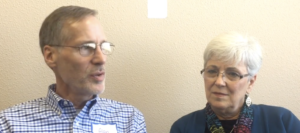The expression “more than one way to skin a cat” is rooted (apparently) in a felin-icidal urge to separate a cat from its skin. The encouraging news is that there are several ways to do it. The alarming news (for cat lovers) is that “several ways” have been contemplated, attempted, and compared.
Like skinning cats, working with church polity models tends to be a messy business (lots of hissing and claws). Church history suggests that different models have been employed over time, though never without attendant limitations and pain. It is good news (on the one hand) that there is more than one way to address church governance. It is distressing to realize (on the other) that there is no “perfect” way.
The polity model proposed below is one way to skin the cat. It is probably not the best way. It is certainly not a perfect way. What I like about this model, however, is that it draws from the dynamics of leadership implied in Ephesians 4:11ff and lived out in the leadership experience of the early church. Let me do a quick overview of the model before proceeding to a detailed analysis.
Envisioned here is a governance model for the local church that shares leadership authority across four different groups: shepherding elders, teaching elders, managing elders, and the senior (or pulpit) minister.
Frankly, this proposed model does not differ radically from the traditional model frequently employed among Churches of Christ. It still places heavy emphasis on elder leadership. (Three of the four recommended leader-groups are comprised of those who have been appointed “elders”. The leadership role of elders in our church culture is so firmly entrenched, it is difficult to image our fellowship ever accepting a polity model that did not have elders at the core.)
However, the proposed model does differ from the traditional in several respects:
- It suggests that different kinds of leaders are called by Christ to lead his church—not just a general and homogenized entity known as “elders.”
- It implies that different leadership groups are defined by and formed around distinct skills and giftings that naturally (or supernaturally?) delineate associated areas of responsibility and work within the church.
- In this regard, the proposed model acknowledges that not all elders are created equal … there are different types of elders with diverse gifts and abilities.
- It encourages different elder-groups to function both autonomously (according to their giftedness) and cooperatively (in conjunction with other leaders possessing different gifts).
- It allows for a formal, equally-authoritative place at the leadership table for the person who serves as a congregation’s pulpit (or senior) minister.
In this model, a close cooperation among the various leadership groups is encouraged in order to accomplish larger areas of work. Where the model for “ministers” and “shepherding elders” overlap (for instance) an area of shared leadership responsibility is defined (in this case, the “pastoral” care of the congregation). Leadership groups work together, pool their gifts and efforts, to bite off larger segments of the church’s essential business. Identifying these cooperative areas places the “big rocks” into a church’s jar and ensures that important kingdom work receives appropriate attention.
This model also suggests accountability built into the system from the start. These leadership groups do not function as islands of responsibility, cut off from and unanswerable to other groups. Managing, shepherding, and teaching elders (as an example) work together to hold ministers accountable for the segment of the church’s work entrusted to them. Ministers, shepherding elders, and teaching elders (as a further example) evaluate the overseeing work of the managing elders and measure their effectiveness. This layer of accountability (defining, assigning, evaluating, and expecting effectiveness) is a critical component of this leadership model.
 Finally, the model also suggests that all of the leadership groups have a “big picture” responsibility to the church: setting vision and direction for the church, determining theological and ministerial priorities, formulating policies by which the church operates, and evaluating whether the church is effectively addressing its God-given business. There is also a shared “disciplining” role at the heart of leadership that protects the church’s teaching and practice, and maintains the “purity” of the body as it lives out its distinctive walk in a dark world.
Finally, the model also suggests that all of the leadership groups have a “big picture” responsibility to the church: setting vision and direction for the church, determining theological and ministerial priorities, formulating policies by which the church operates, and evaluating whether the church is effectively addressing its God-given business. There is also a shared “disciplining” role at the heart of leadership that protects the church’s teaching and practice, and maintains the “purity” of the body as it lives out its distinctive walk in a dark world.
This adjustment of the traditional model is proposed in an attempt to respond faithfully to a theology of calling, sensitively to the notion of giftedness, creatively to the pattern of shared leadership found in the New Testament, comprehensively to the full range of God’s purposes and goals for leadership in the church, and dutifully to the idea that leaders should be held accountable for their effectiveness (or lack thereof). [See Dynamics of New Testament Polity Model article.]





